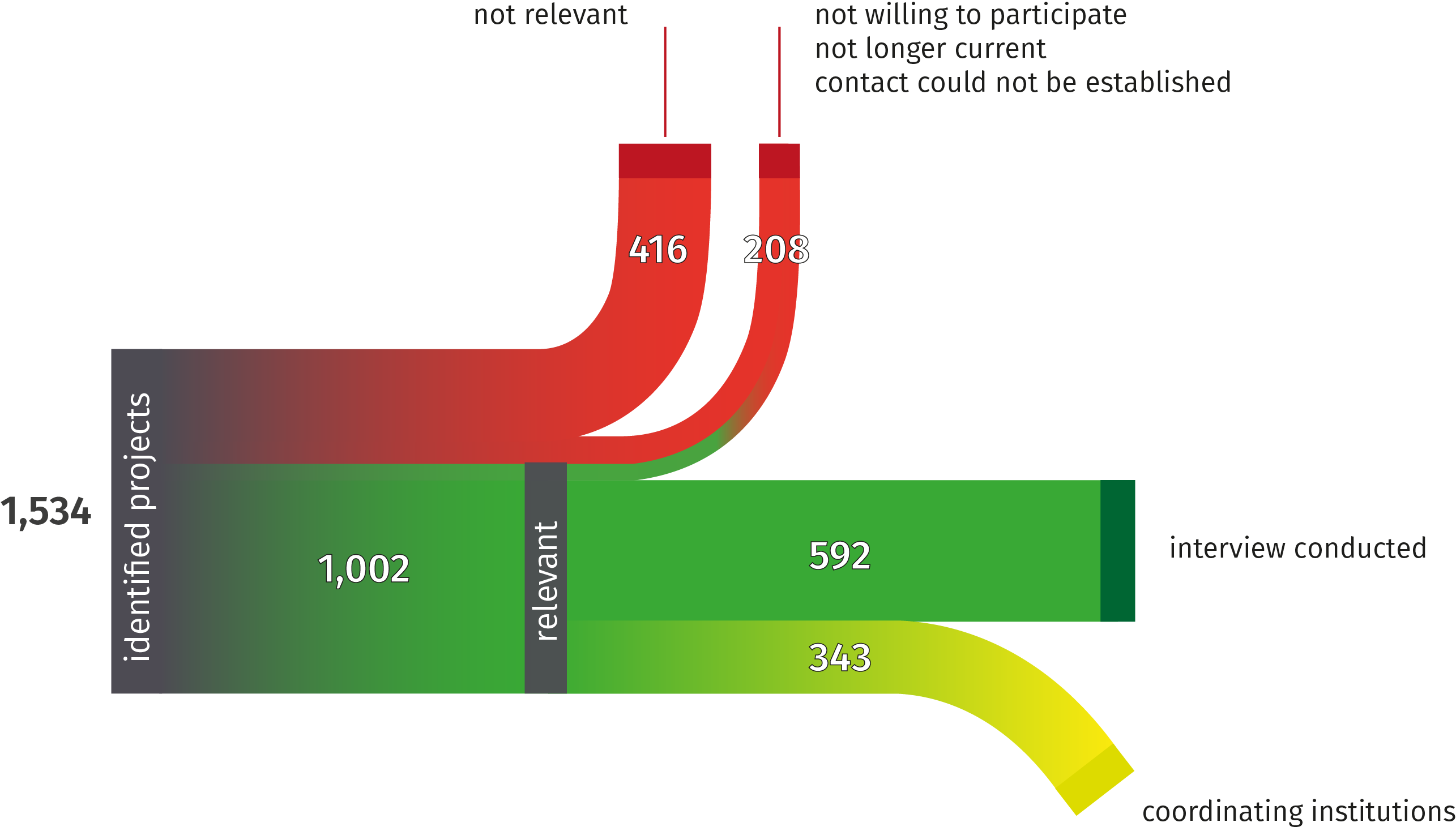Data and methods
Selection process and criteria
In order to approach the basic population, all projects and measures that have been active in 2018 and 2019 were identified by using extensive online and offline research. These projects and measures
- either work to prevent religious radicalization (Islamism and/or neo-Salafism) or
- operate in the field of distancing and deradicalization.
Also included were projects and measures involved in universal or primary prevention, seeking to combat devaluation on the basis of faith, origin or ideology. These projects are not necessarily addressing a specific target or risk group but do exhibit an indirect relationship to the phenomenon. Concretely, they include
- projects and measures promoting democracy and tolerance, cultural diversity and/or inter-faith dialogue, and
- all projects working against racism, prejudice and group-focused enmity in general.
Besides extensive online and offline research in national, state and local authority sources, also important actors such as the State Prevention Councils and the Federal State Democracy Centres were consulted.
Where the reference to the phenomenon was uncertain, an initial telephone interview was conducted to clarify whether the project/measure shows an indirect phenomenon reference (cross-phenomenon or non-phenomenon-specific) according to its self-understanding. Data gathering was restricted to medium- and long-term prevention and intervention projects; one-off events and micro-projects were excluded.
Population and sample
Of the initially recorded and identified 1,534 initiatives of interest
- 1,002 (65 %) were found to be relevant,
- 416 (27 %) were not relevant
- 208 (14 %) were either not willing to participate, no longer current or unreachable.

Of the 1,002 relevant projects and measures,
- 592 agreed to participate in a predominantly standardized telephone interview.
- Most of the remaining 343, with which no interviews were conducted, were federal state programs or central contact/coordinating institutions (for example Partnerships for Democracy). These are institutions and organizations whose primary purpose is to coordinate, network and/or to sponsor/fund projects. Against this backdrop, these institutions and organizations are only mapped in the Project View and not included in the Analytical View, since an interview (from the organization’s perspective) was unlikely to be worthwhile or promised little additional information.
Dataset for Project View
The dataset for the Project View comprises 886 projects, measures and other formats that consented to their data being published in the mapping feature. They break down as follows
- 390 pilot projects and measures,
- 265 Partnerships for Democracy,
- 187 Respekt Coaches,
- 15 Federal State Democracy Centres and 9 Regional Democracy Centres,
- 17 federal state programs and 4 nationwide programs.
Dataset for Analytical View
The Analytical View includes data on 587 projects and measures. These are exclusively those with which a full interview was conducted. Here the data is anonymized and (for data protection reasons) aggregated by federal states so that the information provided is no longer traceable to individual projects.
Data collection
The main field research was conducted between June 2018 and October 2019. The questionnaire was subjected to a standard pretest and revised for comprehensibility and statistical compatibility.
The telephone interviews collected data on
- prevention levels,
- target groups and project intentions,
- fields of action and methods,
- project locations and project’s range,
- contact mode,
- executing organizations,
- funding
- staffing and qualifications,
- cooperation and networking partners,
- evaluation and quality control,
- perceived challenges.
The questionnaire was drafted using LimeSurvey. This allowed responses to be entered directly in the survey database during the telephone interview.
The telephone interviews were conducted by project staff at the four consortium sites.
On average four attempts were required to realize a telephone interview with project leadership. In 24 % of cases an interview was possible on the second attempt, in two cases not until the sixteenth attempt.
The mean interview duration was 33 minutes, with a maximum of 83 minutes and a minimum of 10 minutes.